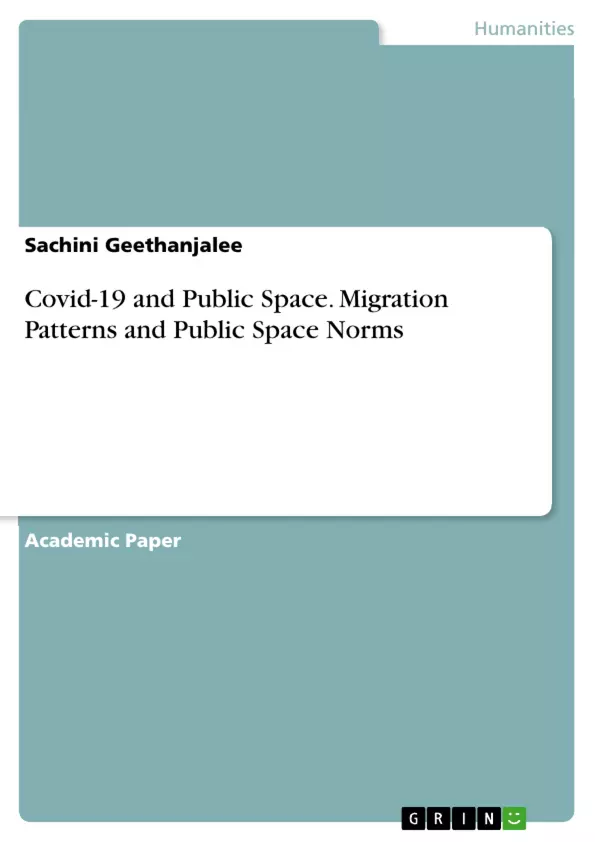Masses are migrating through spatial spheres for various purposes during their lifetime. The situation caused by Covid-19 pandemic distinctly identifies multiple variations in migration and changes of public space. Explicitly, throughout this pandemic, Colombo district residents migrated back to their rural villages. So, shifting population dynamics and spatial variations changed parallel with the pandemic.
This study aims to scrutinize both demographic and political analysis of the changes regarding the pandemic. Especially, with reference to the fact, people who desired to migrate from the periphery (rural) to core (urban), return back to the periphery with this pandemic circumstances. Also, examine the changes and modus operandi on public space. A mixed methodology, both qualitative (online questionnaire and in-depth interviews) and quantitative data sources were used while
This research context aims to examine both demographic and political analysis of the changing migration patterns that happened, when the same people who desired to migrate from the periphery(rural) to the core(urban) returned back to the periphery with the pandemic circumstances. Also, what are the changes and challenges faced by public spheres.
Inhaltsverzeichnis (Table of Contents)
- Abstract
- Introduction
- Research Objectives
- Methodology
- Discussion & Findings
- Conclusion
- Reference
Zielsetzung und Themenschwerpunkte (Objectives and Key Themes)
This research investigates the impact of the Covid-19 pandemic on internal migration patterns in Sri Lanka, specifically focusing on the movement of individuals from Colombo to Matara. The study aims to analyze demographic and political factors contributing to this shift, explore the subsequent changes in public spaces, and assess the challenges faced by both migrants and local communities during the pandemic.
- Impact of Covid-19 on internal migration patterns in Sri Lanka
- Demographic and political factors influencing migration
- Changes in public spaces and their implications
- Challenges faced by internal migrants and local communities
- Strategies for managing and addressing the consequences of pandemic-induced migration
Zusammenfassung der Kapitel (Chapter Summaries)
- Introduction: This chapter provides an overview of migration as a global phenomenon and discusses the impact of the Covid-19 pandemic on migration patterns worldwide. It highlights the shift from urban to rural areas due to concerns over public health and safety.
- Research Objectives: This chapter outlines the specific objectives of the research, focusing on the demographic and political analysis of the shift in migration patterns during the pandemic, the challenges faced by public spaces, and the impact on both migrants and local communities.
Schlüsselwörter (Keywords)
This research explores key concepts related to the impact of the Covid-19 pandemic on migration patterns, public spaces, and societal challenges. Key terms include: internal migration, urban-rural migration, pandemic-induced migration, public health, social distancing, public space, rural development, urban planning, and policy implications.
- Quote paper
- Sachini Geethanjalee (Author), 2021, Covid-19 and Public Space. Migration Patterns and Public Space Norms, Munich, GRIN Verlag, https://www.grin.com/document/1170710



